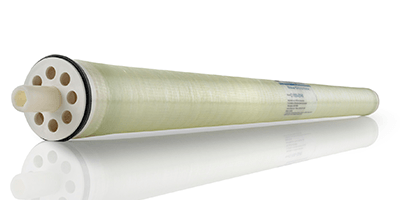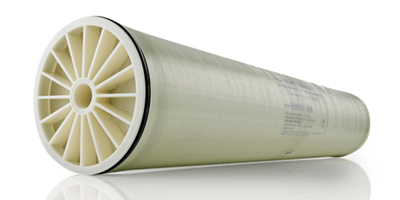DUPONT FILMTEC Nanofiltration Membrane Elements
DUPONT FILMTEC NANOFILTRATION MEMBRANES are designed to eliminate large amounts of total organic carbons (TOC), which include THM precursors, pesticides, and herbicides through a high area and maximum productivity. These NF membranes provide medium to high salt passage and medium hardness passage.
Nanofiltration membranes come in three different sizes (2.5", 4", and 8"), with each being specifically ideal for various applications. The most common utilizations for these membranes are groundwater and surface water, where the removal of organics is done through partial softening in order to ensure a degree of hardness and water quality.
Nanofiltration membranes come in three different sizes (2.5", 4", and 8"), with each being specifically ideal for various applications. The most common utilizations for these membranes are groundwater and surface water, where the removal of organics is done through partial softening in order to ensure a degree of hardness and water quality.
The high active area membrane coupled with low net membrane driving pressure permits these impurities to be extracted at low operating pressure.
Nanofiltration 2.5" MEMBRANES
- Size: 2.5"x40"
- NF90-2540
- NF270-2540
Nanofiltration 4" MEMBRANES
- Size: 4"x40"
- NF270-4040
- NF90-4040
Nanofiltration 8" MEMBRANES
- Size: 8"x40"
- NF270-400
- NF270-400/34i
- NF90-400
- NF90-400/34i
Pure Aqua has over 20 years of experience as a global provider of Dupont/Dow Filmtec Nanofiltration Membrane Elements for all types of water treatment and reverse osmosis systems to meet all of your industrial and commercial needs. These membranes are designed to handle all of the customer requirements and specifications.
Benefits of DUPONT FilmTec Nanofiltration Elements
- Highly efficient in removing organic substances
- Water Quality is Preserved with Partial Softening
- Energy Use and Expenses are Reduced
- Because of the large active region, long membrane life results in high efficiency.
- Easy to clean thanks to a broad pH range (1–12) tolerance for cleaning.
- FilmTec's Reliability and Performance
- Lowering the cost of system operation and the possibility of o-ring leaks, which can lead to poor quality of water
-
Systems
-
Parts
-
Expertise
- Toutes les Expertise
- Engineered Solutions
-
Water Treatment Applications
- Hydrogen Production
- Poultry
- Solar Panels
- Agriculture
- Desalination
- Golf Courses
- Lithium Mining
- Water Stores
- Window Washing
- Aerospace
- Boiler Feed
- Dairy
- Disaster Relief
- Drinking Water
- Environmental
- Fish Hatcheries
- Food & Beverage
- Hospital
- Hotel
- Ice Making
- Laundry
- Marine
- Military
- Mining
- Municipal
- Offshore
- Pharmaceutical
- Power & Energy
- Refinery
- Restaurants
- Semiconductor
- Spot Free
- Wastewater
- Water Treatment Projects
- Regional Expertise
-
Resources
-
About Us
 ENGLISH
ENGLISH ESPAÑOL
ESPAÑOL العربية
العربية PORTUGUÉS
PORTUGUÉS FRANÇAIS
FRANÇAIS



